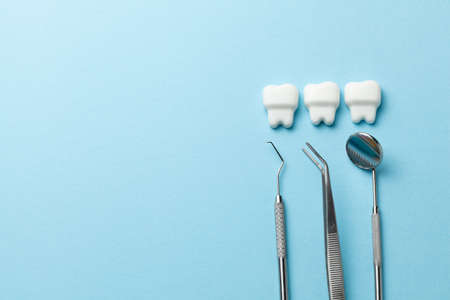Understanding Cosmetic Bonding
Cosmetic bonding is a popular dental procedure in the United States for fixing minor imperfections like chipped, cracked, or discolored teeth. This treatment is known for being quick, affordable, and effective at restoring a confident smile without the need for invasive procedures.
What Is Cosmetic Bonding?
Cosmetic bonding uses a tooth-colored resin material that your dentist applies directly to your teeth. The resin is carefully shaped and polished so it blends naturally with the rest of your smile. This process can repair small chips, close gaps, cover stains, and even reshape teeth that are slightly misshapen.
How Does Cosmetic Bonding Work?
The cosmetic bonding process is straightforward and typically doesn’t require anesthesia unless it’s being used to fill a cavity. Here’s a step-by-step overview:
| Step | Description |
|---|---|
| 1. Preparation | Your dentist selects a resin shade that matches your natural teeth and lightly roughens the surface of the tooth for better bonding. |
| 2. Application | The dentist applies the resin material to the affected area and shapes it to fit your tooth perfectly. |
| 3. Curing | A special light is used to harden the resin quickly. |
| 4. Finishing Touches | The bonded tooth is polished and adjusted as needed for a seamless finish. |
Why Is Cosmetic Bonding So Popular in the U.S.?
Many Americans choose cosmetic bonding because its a simple way to improve their smiles without breaking the bank or spending lots of time in the dental chair. Here are some reasons why this treatment stands out:
- Affordable: Compared to veneers or crowns, bonding is much more budget-friendly.
- Quick Results: Most procedures take just one visit—often less than an hour per tooth.
- No Downtime: You can get back to your daily routine immediately after treatment.
- Natural Appearance: The resin is color-matched to blend with your real teeth, making repairs almost invisible.
Common Issues Cosmetic Bonding Can Fix
| Problem | How Bonding Helps |
|---|---|
| Chipped Teeth | Resin rebuilds missing parts for a smooth look. |
| Cracked Teeth | Bonds and seals cracks for added strength and protection. |
| Discolored Teeth | Covers stains that dont respond to whitening treatments. |
| Slightly Misshapen Teeth | Adds volume or reshapes edges for better symmetry. |
2. Fixing Chipped and Cracked Teeth
Chipping or cracking a tooth can happen to anyone, whether it’s from biting into something hard, a sports accident, or just everyday wear and tear. The good news is that cosmetic bonding offers a quick, painless, and affordable solution for repairing these common dental problems. With cosmetic bonding, your dentist uses a special tooth-colored resin to fill in the chipped or cracked area. This resin is carefully shaped and smoothed to match the natural look of your tooth.
How Cosmetic Bonding Works for Chips and Cracks
The process of cosmetic bonding is straightforward and usually takes just one visit. Here’s what you can expect:
| Step | Description |
|---|---|
| 1. Preparation | Your dentist selects a resin color that matches your natural teeth and gently prepares the damaged area. |
| 2. Application | The tooth-colored resin is applied to the chip or crack and carefully molded into place. |
| 3. Shaping & Curing | The resin is shaped to blend seamlessly with your tooth’s contours, then hardened with a special curing light. |
| 4. Polishing | Finally, the repaired area is polished so it looks smooth and natural—just like the rest of your smile! |
Benefits of Cosmetic Bonding for Chipped and Cracked Teeth
- Natural Appearance: The resin is matched to your exact tooth shade, so repairs are nearly invisible.
- No Anesthesia Needed: Most procedures are painless and don’t require numbing shots.
- Quick Results: Repairs are completed in one appointment—no waiting weeks for results.
- Affordable: Cosmetic bonding costs less than other restorative options like crowns or veneers.
- Preserves Your Tooth: Minimal drilling means more of your healthy tooth stays intact.
Who Is a Good Candidate?
If you have minor chips or cracks in your front teeth, cosmetic bonding may be an ideal solution. It works best for small imperfections rather than large breaks or severe damage. Your dentist can evaluate your teeth and recommend whether bonding is right for you.
![]()
3. Addressing Tooth Discoloration
Tooth discoloration is a common concern for many people, especially when regular brushing and over-the-counter whitening products just don’t seem to do the trick. While teeth whitening treatments can be effective for some stains, there are certain types of discoloration that simply won’t respond to bleaching. This is where cosmetic bonding comes into play as a reliable and affordable solution.
How Cosmetic Bonding Helps With Discolored Teeth
Cosmetic bonding uses a special tooth-colored resin that your dentist applies directly to the surface of your teeth. This resin can cover up stubborn stains and discolorations, giving you a more uniform and natural-looking smile. The process is quick, usually completed in a single visit, and the results are instant.
Types of Tooth Discoloration That Bonding Can Fix
| Type of Discoloration | Can Whitening Help? | Can Bonding Help? |
|---|---|---|
| Surface Stains (coffee, tea, tobacco) | Yes | Yes |
| Internal Stains (medication, trauma) | No | Yes |
| Genetic Discoloration | No | Yes |
| Aging-Related Yellowing | Sometimes | Yes |
| Fluorosis (white/brown spots) | No | Yes |
The Bonding Process Explained Simply
Your dentist will start by selecting a resin color that matches your natural teeth. Then, they’ll gently prepare the tooth’s surface so the bonding material sticks properly. After applying the resin, it’s shaped and smoothed before being hardened with a special light. Finally, your dentist will polish the bonded area so it blends seamlessly with your other teeth.
Why Choose Bonding Over Whitening?
- Covers stubborn stains: Great for stains that whitening can’t remove.
- Instant results: Walk out with a brighter smile after just one appointment.
- No damage: Doesn’t remove any natural enamel from your teeth.
- Customizable: Your dentist can match the exact color you want.
- Budget-friendly: More affordable compared to veneers or crowns.
If you’ve been frustrated by persistent discoloration that won’t respond to whitening strips or trays, cosmetic bonding could be just what you need for a confident, stain-free smile.
4. The Cosmetic Bonding Procedure: What to Expect
Step-by-Step Breakdown of the Cosmetic Bonding Process
Cosmetic bonding is a popular and straightforward dental solution in the U.S. for fixing chipped, cracked, or discolored teeth. Here’s what you can expect when visiting your dentist for cosmetic bonding:
1. Consultation and Preparation
Your dentist will first examine your teeth to determine if bonding is the right treatment for you. This visit usually involves X-rays and a discussion about your dental history and goals.
2. Shade Matching
The dentist selects a composite resin color that closely matches your natural tooth shade so the result looks seamless.
3. Tooth Surface Preparation
The surface of your tooth will be gently roughened and a conditioning liquid is applied. This helps the bonding material adhere better.
4. Application of Composite Resin
The tooth-colored resin is carefully molded and shaped to cover chips, cracks, or discoloration.
5. Curing with Special Light
A blue light is used to harden the resin quickly, making it durable enough for everyday use.
6. Finishing Touches
Your dentist trims, shapes, and polishes the bonded area so it blends perfectly with your surrounding teeth.
| Bonding Step | What Happens? |
|---|---|
| Consultation & Prep | Exam, X-rays, color matching |
| Surface Prep | Tooth roughening, conditioner applied |
| Resin Application | Molding resin onto tooth |
| Curing | Blue light hardens resin |
| Finishing | Smoothing and polishing |
Your Comfort During the Procedure
Most patients in American dental offices find cosmetic bonding comfortable and stress-free. Numbing is rarely needed since there’s minimal drilling or removal of enamel. You’ll likely feel only gentle pressure as the dentist works on your tooth.
Aftercare Tips from U.S. Dental Pros
- Avoid biting into hard foods (like ice or candy) with bonded teeth to prevent damage.
- Brush twice daily with fluoride toothpaste and floss once a day to keep your smile healthy.
- Avoid staining drinks like coffee, tea, or red wine for at least 48 hours after bonding.
- Schedule regular cleanings and checkups—most American dentists recommend every six months.
- If you notice any sharp edges or chipping, call your dentist for a quick touch-up.
How Long Does Cosmetic Bonding Last?
With good care, cosmetic bonding typically lasts 3–10 years before needing a refresh. Your dentist will check your bonding during routine visits to make sure everything stays in top shape.
5. Benefits and Limitations of Cosmetic Bonding
A Candid Look at Cosmetic Bonding for American Patients
Cosmetic bonding is a popular choice in the United States for fixing chipped, cracked, or discolored teeth. Many people are drawn to it because it’s quick, minimally invasive, and budget-friendly compared to other cosmetic dental treatments. But like any dental procedure, it has both upsides and downsides. Here’s what you need to know if you’re thinking about getting cosmetic bonding done.
Main Benefits of Cosmetic Bonding
| Benefit | Description |
|---|---|
| Affordability | Bonding is generally less expensive than veneers or crowns. It’s a good option for those looking for results on a budget. |
| Quick Procedure | The entire process can usually be done in just one visit, often taking less than an hour per tooth. |
| No Anesthesia Needed | Most bonding procedures don’t require numbing shots unless there’s decay being filled as well. |
| Conservative Treatment | Bonding preserves most of your natural tooth structure—there’s little to no drilling involved. |
| Natural Appearance | The composite resin used can be color-matched to blend with your surrounding teeth for a seamless look. |
Potential Limitations of Cosmetic Bonding
| Limitation | Description |
|---|---|
| Durability | Bonded teeth aren’t as strong as natural enamel or porcelain restorations. They can chip or wear down, especially if you bite hard foods or have habits like nail biting. |
| Staining Over Time | The composite material may stain more easily than your natural teeth, especially if you drink coffee, red wine, or smoke regularly. |
| Lifespan | On average, bonding lasts 3-7 years before needing repair or replacement—shorter than veneers or crowns. |
| Not for Major Repairs | If damage is extensive, bonding might not be strong enough. More serious chips or cracks may need crowns or veneers instead. |
| Insurance Coverage Varies | Since bonding is usually considered cosmetic, some insurance plans may not cover the cost. |
Typical Results for American Patients
For many Americans, cosmetic bonding delivers noticeable improvements in the appearance of their smile with minimal hassle. It works best for minor imperfections and is ideal for patients who want fast results without breaking the bank. However, understanding its limitations helps set realistic expectations and ensures long-term satisfaction with your dental investment.


